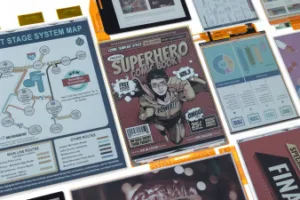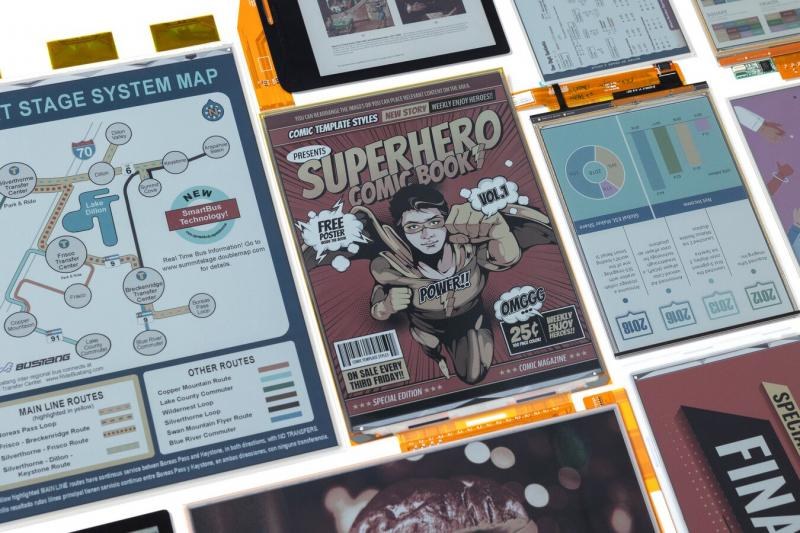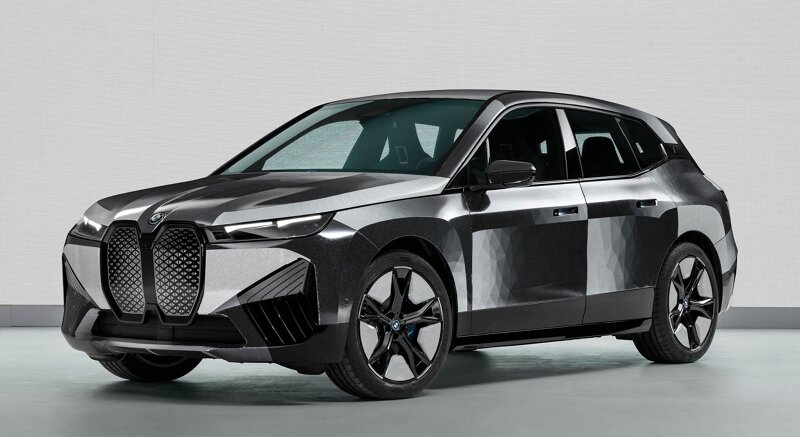
The most well established reflective displays are the E Ink electrophoretic displays and we mention them a lot (there are 343 articles with that name in the database online here). The potential of an extremely low power, high resolution colour display that could show video has driven a lot of different research projects over the years. However, many have fallen by the wayside because of difficulties in industrialisation (or have been purchased by E Ink or other large companies). Some of the contendors have been
- Mirasol (backed by Qualcomm and based on MEMS technology from the Iridgm US start-up). Billions were spent, and despite some great demoes, it never came into volume production.
- Liquavista (started from Philips R&D and was bought by Samsung in 2011, re-acquired by its founders and then bought by Amazon, but was closed down around three years ago).
- ZBD bistable LCD technology (now owned by New Vision with whom I’m planning to catch up in a couple of weeks).
- SiPix which was bought by E Ink
- ClearInk, which seemed to have something in a different approach to EPD, and got some investment from Lenovo, among others, but changed ownership in 2020 and disappeared off our radar into China.
- Binem from Nemoptic – an LCD developed in France that eventually disappeared.
- Optrex, which developed cholesteric displays
- Kent Displays which has cholesteric technology in its Boogie Boar
- Dalian Good Display (which has, apparently, developed Display Electronic Slurry)
(others I never really followed up include Citala, Papyron, Ntera, Gyricon (closed in 2006)). (and after publication, I would add eTulipa, Bodle and TCL’s NXTPaper
E Ink has been very good at finding applications where the technology that it had could be used to real advantage. It has continued to develop and refine its technology at the detail level to try to wring out the maximum possible performance within its limits. The bistable technology, where power is only needed when content is changed has been crucial to the eReader market segment and for electronic shelf labels (ESLs) – a market where reflective LCD also had some share, but where the paper-like look of E Ink is preferred.
E Ink has added colour to its displays and a recent article from IEEE Spectrum explained in some detail how the firm developed colour E Ink, initially based on putting colour filters on top of grey scale displays, but suffering from lowered resolution as well as poor contrast and colour saturation compared to the displays that consumers expect from their devices.
The firm then developed its E Ink Spectra system which used three particle colours to allow saturated colours, with high contrast, but could not combine the colours as each was in a different ‘microcup’ (the microcup idea came from the SiPix acquisition). That technology was used in ESLs and in 2021, E Ink extended the idea to four colours to give black, white, yellow and red.
Colour Gets More Advanced
E Ink came up with it calls its Advanced Color ePaper (ACeP) concept, which uses white, cyan, magenta and yellow particles which are of different sizes and can be controlled in the vertical plane in the pixel by sophisticated driving technology which moves the different coloured particles separately. That technology allows more subtle colours and was commercialised as E Ink Gallery in 2016. The key to ACeP was that every part of the display structure could contain all four colours rather than isolating them as the firm does in the Spectra system.
To further develop the technology, it went back to the idea of filters, but instead of putting them in a square grid on glass, it put the filters directly on the top film of the display, which helped alignment as well as losing fewer photons and allowing optimisation for front lighting, which was also added. That was launched as Kaleido in 2019, and upgraded to Kaleido Plus in 2021. This generation allows 4096 colours (with 16 levels of greyscale) and with 300ppi in greyscale, 100ppi in colour. It achieves contrast of 19:1 without a front light, which is plenty for reading.
However, as always, the technology is slow. When most displays are considered fast at just a few milliseconds of response time, the 350ms of Kaleido Plus remains a limiter of applications. When Kaleido Plus was launched almost a year ago, the firm had some clients that had developed coloured eReaders for shipment. However, the heavy gorilla of the eReader market, Amazon, with its Kindle line, does not currently have a colour version.
E Ink have been used in other applications including digital signage and meeting room displays. Visionect has been developing signage including 13″ and 32″ ‘place and play’ displays as well as its Joan system for meeting room management. A company called Quirklogic had an intriguing 42″ collaboration display called the Quilla as well as a 13.3″ note-taking device. (Quilla is now in Production for Ideation)
However, E Ink has a lot more up its sleeve than just small displays and we have reported on the use of its large area films being used for architectural projects (the San Diego Airport Rental Car Center is the most famous, I think).
Just a few weeks ago, at CES, BMW showed the use of the film to change the colour of a vehicle from white to black, electronically. At the moment, this is just a concept, but in the future a surface on a car like this could be used to signal the intentions of a car, for example, to pedestrians as well as allowing individuals to ‘express themselves’ in graphic ways using the film.



